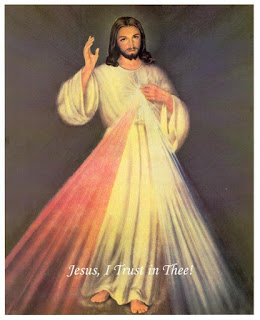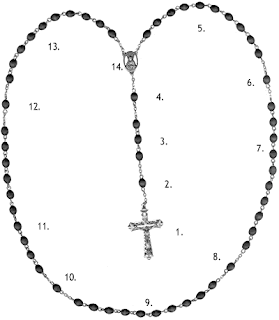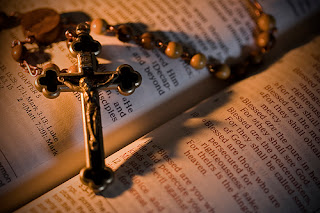by Kenneth D. Whitehead
The Creed which we recite on Sundays and holy days speaks of one, holy, catholic and apostolic Church. As everybody knows, however, the Church referred to in this Creed is more commonly called just the Catholic Church. It is
not, by the way, properly called the Roman Catholic Church, but simply the Catholic Church.
The term Roman Catholic is not used by the Church herself; it is a relatively modern term, and one, moreover, that is confined largely to the English language. The English-speaking bishops at the First Vatican Council in 1870, in fact, conducted a vigorous and successful campaign to insure that the term Roman Catholic was nowhere included in any of the Council's official documents about the Church herself, and the term was not included.
Similarly, nowhere in the 16 documents of the Second Vatican Council will you find the term Roman Catholic. Pope Paul VI signed all the documents of the Second Vatican Council as "I, Paul. Bishop of the Catholic Church." Simply that -- Catholic Church. There are references to the Roman curia, the Roman missal, the Roman rite, etc., but when the adjective Roman is applied to the Church herself, it refers to the Diocese of Rome!
Cardinals, for example, are called cardinals of the Holy Roman Church, but that designation means that when they are named to be cardinals they have thereby become honorary clergy of the Holy Father's home diocese, the Diocese of Rome. Each cardinal is given a titular church in Rome, and when the cardinals participate in the election of a new pope. they are participating in a process that in ancient times was carried out by the clergy of the Diocese of Rome.
Although the Diocese of Rome
is central to the Catholic Church, this does not mean that the Roman rite, or, as is sometimes said, the Latin rite, is co-terminus with the Church as a whole; that would mean neglecting the Byzantine, Chaldean, Maronite or other Oriental rites which are all very much part of the Catholic Church today, as in the past.
In our day, much greater emphasis has been given to these "non-Roman" rites of the Catholic Church. The Second Vatican Council devoted a special document,
Orientalium Ecclesiarum (Decree on Eastern Catholic Churches), to the Eastern rites which belong to the Catholic Church, and the new Catechism of the Catholic Church similarly gives considerable attention to the distinctive traditions and spirituality of these Eastern rites.
So the proper name for the universal Church is
not the Roman Catholic Church. Far from it. That term caught on mostly in English-speaking countries; it was promoted mostly by Anglicans, supporters of the "branch theory" of the Church, namely, that the one, holy, catholic and apostolic Church of the creed was supposed to consist of three major branches, the Anglican, the Orthodox and the so-called Roman Catholic. It was to avoid that kind of interpretation that the English-speaking bishops at Vatican I succeeded in warning the Church away from ever using the term officially herself: It too easily could be misunderstood.
Today in an era of widespread dissent in the Church, and of equally widespread confusion regarding what authentic Catholic identity is supposed to consist of, many loyal Catholics have recently taken to using the term Roman Catholic in order to affirm their understanding that the Catholic Church of the Sunday creed is the same Church that is united with the Vicar of Christ in Rome, the Pope. This understanding of theirs is correct, but such Catholics should nevertheless beware of using the term, not only because of its dubious origins in Anglican circles intending to suggest that there just might be some other Catholic Church around somewhere besides the Roman one: but also because it often still is used today to suggest that the Roman Catholic Church is something other and lesser than the Catholic Church of the creed. It is commonly used by some dissenting theologians, for example, who appear to be attempting to categorize the Roman Catholic Church as just another contemporary "Christian denomination"--not the body that is identical with the one, holy, catholic and apostolic Church of the creed.
The proper name of the Church, then, is the Catholic Church. It is not ever called "the Christian Church," either. Although the prestigious Oxford University Press currently publishes a learned and rather useful reference book called "The Oxford Book of the Christian Church," the fact is that there has never been a major entity in history called by that name; the Oxford University Press has adopted a misnomer, for the Church of Christ has never been called the Christian Church.
There is, of course, a Protestant denomination in the United States which does call itself by that name, but that particular denomination is hardly what the Oxford University Press had in mind when assigning to its reference book the title that it did. The assignment of the title in question appears to have been one more method, of which there have been so many down through history, of declining to admit that there is, in fact, one--and only one--entity existing in the world today to which the designation "the Catholic Church" in the Creed might possibly apply.
The entity in question, of course, is just that: the very visible, worldwide Catholic Church, in which the 263rd successor of the Apostle Peter, Pope John Paul II, teaches, governs and sanctifies, along with some 3,000 other bishops around the world, who are successors of the apostles of Jesus Christ.
As mentioned in the Acts of the Apostles, it is true that the followers of Christ early became known as "Christians" (cf. Acts 11:26). The name Christian, however, was never commonly applied to the Church herself. In the New Testament itself, the Church is simply called "the Church." There was only one. In that early time there were not yet any break-away bodies substantial enough to be rival claimants of the name and from which the Church might ever have to distinguish herself.
Very early in post-apostolic times, however. the Church did acquire a proper name--and precisely in order to distinguish herself from rival bodies which by then were already beginning to form. The name that the Church acquired when it became necessary for her to have a proper name was the name by which she has been known ever since-the Catholic Church.
The name appears in Christian literature for the first time around the end of the first century. By the time it was written down, it had certainly already been in use, for the indications are that everybody understood exactly what was meant by the name when it was written.
Around the year A.D. 107, a bishop, St. Ignatius of Antioch in the Near East, was arrested, brought to Rome by armed guards and eventually martyred there in the arena. In a farewell letter which this early bishop and martyr wrote to his fellow Christians in Smyrna (today Izmir in modern Turkey), he made the first written mention in history of "the Catholic Church." He wrote, "Where the bishop is present, there is the Catholic Church" (To the Smyrnaeans 8:2). Thus, the second century of Christianity had scarcely begun when the name of the Catholic Church was already in use.
Thereafter, mention of the name became more and more frequent in the written record. It appears in the oldest written account we possess outside the New Testament of the martyrdom of a Christian for his faith, the "Martyrdom of St. Polycarp," bishop of the same Church of Smyrna to which St. Ignatius of Antioch had written. St. Polycarp was martyred around 155, and the account of his sufferings dates back to that time. The narrator informs us that in his final prayers before giving up his life for Christ, St. Polycarp "remembered all who had met with him at any time, both small and great, both those with and those without renown, and the whole Catholic Church throughout the world."
We know that St. Polycarp, at the time of his death in 155, had been a Christian for 86 years. He could not, therefore, have been born much later than 69 or 70. Yet it appears to have been a normal part of the vocabulary of a man of this era to be able to speak of "the whole Catholic Church throughout the world."
The name had caught on, and no doubt for good reasons.
The term "catholic" simply means "universal," and when employing it in those early days, St. Ignatius of Antioch and St. Polycarp of Smyrna were referring to the Church that was already "everywhere," as distinguished from whatever sects, schisms or splinter groups might have grown up here and there, in opposition to the Catholic Church.
The term was already understood even then to be an especially fitting name because the Catholic Church was for everyone, not just for adepts, enthusiasts or the specially initiated who might have been attracted to her.
Again, it was already understood that the Church was "catholic" because -- to adopt a modern expression -- she possessed the fullness of the means of salvation. She also was destined to be "universal" in time as well as in space, and it was to her that applied the promise of Christ to Peter and the other apostles that "the powers of death shall not prevail" against her (Mt 16:18).
The Catechism of the Catholic Church in our own day has concisely summed up all the reasons why the name of the Church of Christ has been the Catholic Church: "The Church is catholic," the Catechism teaches, "[because] she proclaims the fullness of the faith. She bears in herself and administers the totality of the means of salvation. She is sent out to all peoples. She speaks to all men. She encompasses all times. She is 'missionary of her very nature'" (no. 868).
So the name became attached to her for good. By the time of the first ecumenical council of the Church, held at Nicaea in Asia Minor in the year 325 A.D., the bishops of that council were legislating quite naturally in the name of the universal body they called in the Council of Nicaea's official documents "the Catholic Church." As most people know, it was that same council which formulated the basic Creed in which the term "catholic" was retained as one of the four marks of the true Church of Christ. And it is the same name which is to be found in all 16 documents of the twenty-first ecumenical council of the Church, Vatican Council II.
It was still back in the fourth century that St. Cyril of Jerusalem aptly wrote, "Inquire not simply where the Lord's house is, for the sects of the profane also make an attempt to call their own dens the houses of the Lord; nor inquire merely where the church is, but where the Catholic Church is. For this is the peculiar name of this Holy Body, the Mother of all, which is the Spouse of Our Lord Jesus Christ" (
Catecheses, xviii, 26).
The same inquiry needs to be made in exactly the same way today, for the name of the true Church of Christ has in no way been changed. It was inevitable that the Catechism of the Catholic Church would adopt the same name today that the Church has had throughout the whole of her very long history.
From
The Catholic Answer, May/June 1996?
Published by Our Sunday Visitor, Inc., 200 Noll Plaza, Huntington, IN 46750, 1-800-521-0600.








